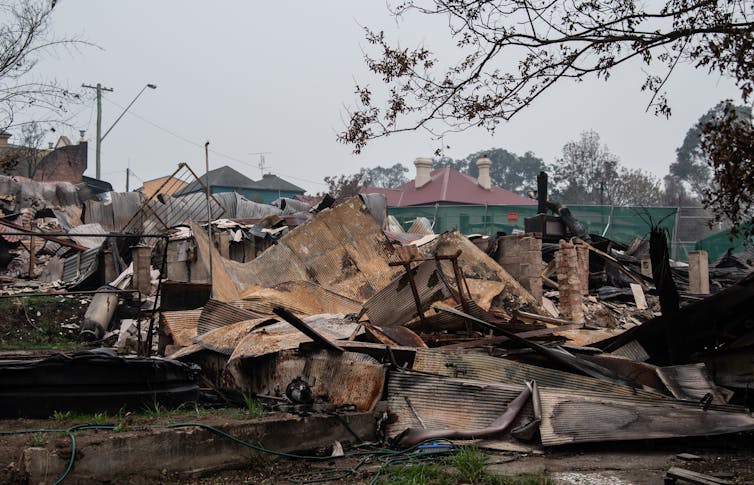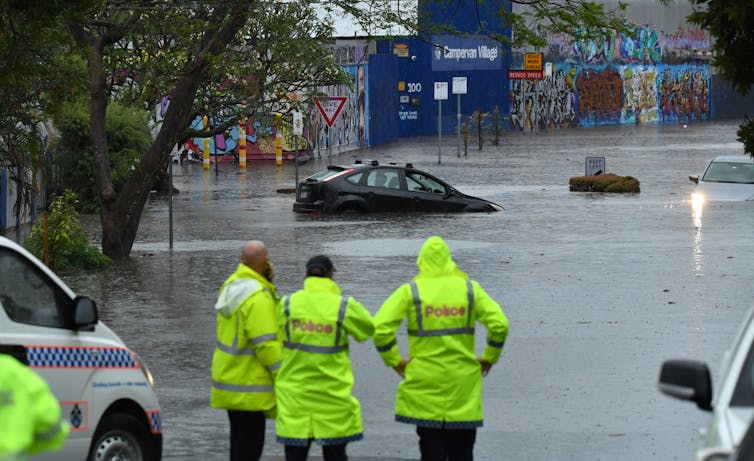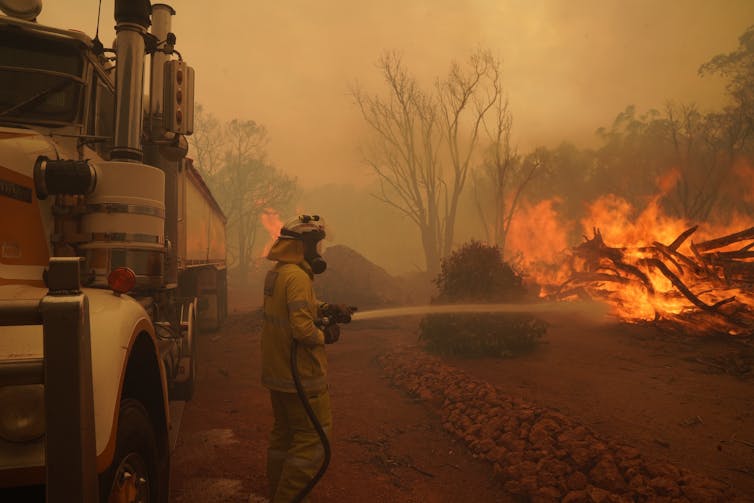Underinsurance is entrenching poverty as the vulnerable are hit hardest by disasters
- Written by Kate Isabel Booth, Senior Lecturer in Human Geography and Planning, University of Tasmania
More than 70 homes were destroyed by bushfires in Western Australia this week, leaving those affected facing enormous costs. After disasters like these, insurance is not always there as needed — or as expected.
In Australia, where one in six children live in poverty, significant rates of underinsurance entrench disadvantage and hardship. This dynamic will worsen as the consequences of unmitigated climate change unfold.
Up to 10% of homeowners or mortgagees are without home insurance and about 40% of renters are without contents insurance. Underinsurance can make a bad situation worse, and make it harder to get back to normal after a disaster.
Our national research suggests simply telling people to get more insurance is not necessarily the answer. To understand that, we need ask why people are underinsured.
 After disaster strikes, insurance is not always there as needed — or as expected.
AAP Image/James Gourley
After disaster strikes, insurance is not always there as needed — or as expected.
AAP Image/James Gourley
Why are so many underinsured?
A lot of underinsurance is by accident rather than design. After being burnt out by Victoria’s Black Saturday bushfires in 2009, one of our interviewees, Bridget*, told us:
You think okay, this is what I paid for the property […] I reckon I could rebuild it for X […] I think we had about A$550,000 on the house, and the contents was maybe $120,000 […] You think sure, yeah I can rebuild my life with that much money. But nowhere near. Not even close. We wound up with a $700,000 mortgage at the end of rebuilding.
It is hard for people to accurately calculate repair or rebuild costs. Risks are uncertain, insurers have their own complex rules, and online calculators come with their own fine print.
Renters are at risk of underinsurance as they tend to forego contents insurance, though the building itself will probably be insured by the landlord.
Following the Hobart floods in 2018, one of our interviewees, John, was without contents insurance when his rented home was flooded. He told us:
We were wondering about temporary accommodation, whether they would put us up until we found a new place to live […] They said that that was under contents insurance, which was our responsibility, and the house insurance just covers the house.
 A lot of underinsurance is by accident rather than design.
AAP Image/Darren England
A lot of underinsurance is by accident rather than design.
AAP Image/Darren England
Lack of trust
If you are on a lower income, you are more likely to be underinsured. Sandra, who lives in a bushfire-prone area, described to us her decision-making when buying insurance on a limited budget by saying:
The contents is insured to $20,000 … We’ve got a lot of irreplaceable stuff here … and a lot of equipment of value … the value is going to be far more than that. But I just hope that we’d have like a small kitty that would be like $20,000. I figured would be enough to replace just the essential items.
Rosalie and her family live without any house and contents insurance, and illustrate another reason for underinsurance:
Just the way they (insurers) word things […] they’re trying to make sure they exclude certain things, and while we sort of fall within the parameters of what’s included, I have a feeling that they’ll go, ‘oh no, you’ve got a dingle on your dangle and it’s just not included’.
A lack of trust in insurers may be based on previous experience of an insurance claim not coming through as expected, or in political perspectives questioning the power of large corporations.
More insurance is not a straightforward solution
More insurance may help renters and home owners. But to decide how much more, you need access to accurate rebuild or valuation costs. Accessing, understanding and keeping up to date with complex knowledge about risk and construction is beyond the capacities of many who already live busy lives. And to make decisions about contents insurance, renters need capacity and time to understand the risks of being an underinsured renter.
Simply encouraging people to get more insurance doesn’t help people like Sandra, who are on a limited budget, nor will it address distrust of insurers.
Instead of telling people to buy more of the right type of insurance, we should be asking how insurance can work better for people.
Read more: Insurance is unaffordable for some, but it's middle Australia that is underinsured
Making insurance work
Insurance spreads costs and risks across populations; it recognises shared interests can create shared benefits. Maintaining the public benefit of insurance includes making it more equitable through government regulation and consumer demand.
Insurance should remain about the equitable distribution of costs and risks so everyone has a safety net if disaster strikes.
We must resist the trend towards insurance products that are tailored in response to individual characteristics and risks. This individualisation favours those with higher incomes and lower levels of risk, and marginalises disadvantaged populations living with higher risk. In other words, it puts insurance out of reach for those most likely to need it.
 Insurance is only one tool in disaster preparedness and recovery.
AAP Image/Supplied by DFES, Evan Collis
Insurance is only one tool in disaster preparedness and recovery.
AAP Image/Supplied by DFES, Evan Collis
Governments should not view insurance as the key disaster recovery tool, and must not rely on individuals to manage their own risks with insurance.
Insurance is only one tool in disaster preparedness and recovery. Others — including building code reform, effective land-use planning, and a well-funded social safety net — require strong government leadership.
In a changing climate, governments must recognise we are all in this together. Telling people “Well, you should have been insured” when there are so many reasons why someone might be underinsured is unhelpful, unfair, divisive and allows governments to shirk their responsibilities toward all citizens.
Read more: A crisis of underinsurance threatens to scar rural Australia permanently
* All names have been changed to protect identities.
This story is part of a series The Conversation is running on the nexus between disaster, disadvantage and resilience. You can read the rest of the stories here.
Authors: Kate Isabel Booth, Senior Lecturer in Human Geography and Planning, University of Tasmania





